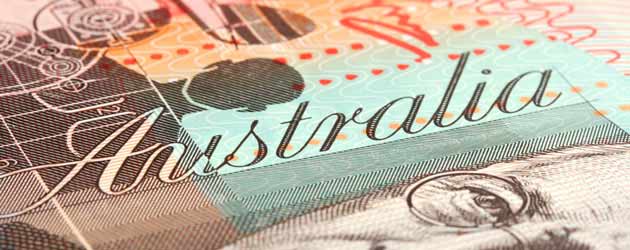
The Pound to Australian Dollar exchange rate (GBP/AUD) declined by around 1.4 cents last night in reaction to a surprisingly strong Consumer Price Index print of 2.7%.
The inflation figure had been expected to rise from 2.2% to 2.4%, but with CPI printing much higher at 2.7% it is now very unlikely that the Reserve Bank of Australia will reduce rates at its next meeting and this bolstered demand for the ‘Aussie’.
The higher-than-anticipated score was brought about by a 6.9% rise in domestic holiday costs, an 8.1% rise in fruit prices and a 7.1% increase in vegetable prices.
Earlier in the day, the Pound had rallied by around half a cent as markets reacted to a positive revision to the UK’s growth projections from the IMF. The International Monetary Fund upgraded its GDP forecast for 2014 from 1.9% to 2.4%, commenting that the British economy is on steady footing:
“Activity in the United Kingdom has been buoyed by easier credit conditions and increased confidence”.
In other words: consumers have stopped saving and started spending.
Many economic commentators have suggested that the UK recovery is not sustainable in the long run unless real wages begin to increase. However, the IMF’s assertion that British growth “can continue for some time” was seen as a positive signal for the domestic economy, and in turn the Pound Sterling.
Later on today GBP/AUD movement is likely to be dictated by the outcome of the latest UK labour market report. The UK Unemployment Rate is predicted to have fallen from 7.4% to 7.3% during November, thus taking the jobless figure one step closer to the Bank of England’s 7.0% threshold. An on-target result would likely lead to Sterling rallies, whilst a better-than-expected print has the potential to send the Pound to Australian Dollar exchange rate up to a new 4-year high.
However, there is one caveat that could dampen Sterling’s prospects. The BoE is also due to release the Minutes from its January meeting this morning and if the report shows a willingness to pushback the Unemployment threshold from 7.0% to 6.5% it could act as a veritable barrier to any further GBP gains.
The other major event on the calendar today is the Bank of Canada rate decision. The ‘Loonie’ has been trading lower against the Pound – among other currency foes – for around half a year now due to a shift in rate bias from the BoC. If the Canadian Central Bank opts to reduce its benchmark interest rate later this afternoon it is likely to prove catastrophic for the local currency.
However, with Canadian CPI inflation predicted to rise from 0.9% to 1.4% on Friday, it is probable that the Bank will remain on the sidelines during January. Having said that, the ‘Loonie’ is also susceptible to fresh 4-year lows against the Pound if Governor Stephen Poloz is seen to strike a dovish tone in his policy statement.

Comments are closed.